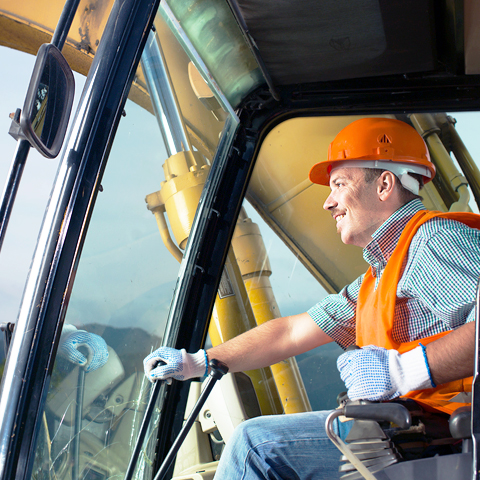A: Yes. Calling or contacting Gopher State One Call online is a state law (Minnesota Statute Chapter 216D) designed to protect your underground utilities and the public.
A: Paint and/or flags indicate digging will occur in your area. The facility operators have marked the location of underground facility lines. To view the facility operator’s response to your ticket, please visit the ticket search site at gsocsearch.org. This site allows you to enter your ticket number and view all responses.
A: Yes. Gopher State One Call has an online system to submit your dig information: gsocsubmit.org.
A: Whether you contact Gopher State One Call online or via phone, you will be asked many important questions about where and when you will be digging. Gopher State One Call notifies the utility companies which have underground utilities near your dig site. The utility companies will mark where their utilities are located with paint and flags, or determine they do not have utilities where you will be digging.
A: After you have contacted Gopher State One Call, you must wait 48 hours (excluding weekends and holidays) before digging. A good practice before digging is to check Gopher State One Call’s Positive Response site at gsocrespond.org to determine if each utility company has visited your dig site or responded to your locate request.
A: Sometimes utility companies do not have underground utilities near your dig area. In this case, check the Gopher State One Call Positive Response site at gsocrespond.org to ensure the utility company has cleared your dig site or responded to.
A: A locate is valid for 14 days from the excavation start date and time stated on the ticket, unless the excavator has made previous arrangements with the utility companies affected to periodically verify, refresh, or re-mark the locate.
A: After markings have been made, you are required to maintain a minimum horizontal (side to side) clearance of two feet (24") between an unexposed utility and the cutting edge or point of any power operated excavating or earth-moving equipment. For example, if the markings indicate a 6" pipe is buried, the hand dig zone is 54" wide (6" + 24" on each side of the mark). If excavation is required within the hand dig zone, the excavation must be performed very carefully, with hand tools, and without damage to the utility or undermining of lateral support. Please note that utility depths may vary due to installation practices, changes in the grade, erosion and other variables. Therefore, any depth readings given by a locator, if given at all, are only an indication of the approximate depth of the utilities.
A: If, during the course of digging, a utility line has been exposed, it is your responsibility to inspect and support the utilities before backfilling. You must inspect utilities for any damage which could include the pulling or kinking of the utility or damage to the protective coating or covering. If damage exists, it is your responsibility to immediately notify the utility company directly. If there is any question about possible danger, we recommend contacting the utility company for instructions. Minnesota rules only require you to contact Gopher State One Call if you have reason to believe marks are incorrect or missing. You should also plan your work to minimize damage to markings.
A: The first thing you must do is evacuate everyone if you have created a dangerous situation. If so, call 911 immediately and keep the area clear. Also, call the utility you hit and make them aware of what has happened. They can be reached by contacting us at customersupport@gopherstateonecall.org or by calling (651) 681-7326.
A: There is no such thing as a blanket ticket. If you are a subcontractor and you are excavating, protect yourself and your company by calling to get a ticket. The general contractor's ticket does not apply to anyone except them.
A: Correcting an error on a ticket can be done by calling Gopher State One Call as soon as possible. A representative will assist in updating your ticket. Information can only be changed by the homeowner or the person working for the same company from which the ticket originated. In other words, a subcontractor may not change information on a ticket filed by a homeowner or general contractor. If the start date and time issued by Gopher State One Call arrives and a utility operator has not marked, or has marked the utilities incorrectly, the law requires you to contact Gopher State One Call again.
A: Visit gsocsubmit.org, or call (651) 454-0002 and select option 7, to speak to a representative. GSOC Customer Support cannot update or cancel tickets; you must go through the call center.
A: Call (651) 454-0002 and select option 7 to speak to a representative. GSOC Customer Support cannot change or reissue tickets; you must go through the call center.
A: Gopher State One Call Customer Support will assist you with resending tickets and audits. They can be reached by emailing customersupport@gopherstateonecall.org or calling (651) 681-7326.
A: Typically you will receive confirmation upon processing your online ticket. Mondays tend to be busiest and it is possible the processing time will be longer. If you do not receive confirmation, contact customersupport@gopherstateonecall.org or call (651) 681-7326.
A: Email your question to accounting@gopherstateonecall.org, or call the accounting department at (651) 454-8388, and an accounting representative will assist you with your question.
A: Call the utility and notify them directly. Click here for a list of utility operator phone numbers.
A: No. The party who is actually doing the work is the party that needs to create a ticket.
A: Tickets are limited to 5 miles in length. If you are working over a large stretch of road, it is required to break your work into 5 mile segments.
A: Use Gopher State One Call’s ITIC site to submit them electronically at gsocsubmit.org.
A: Be as specific as possible when submitting tickets with complicated driving directions or instructions. Provide specific measurements (miles, yards, footage, etc) when supplying driving directions or instructions within the work site.
A: An operator can help to advise you on the best way to separate your tickets. The general rule of thumb is that a single continuous line, such as a right of way or a single pipeline, can be one ticket. Any type of work which would require marking of entire properties, such as irrigation systems, fences, or service lines to the houses, should be limited to one ticket per address.



